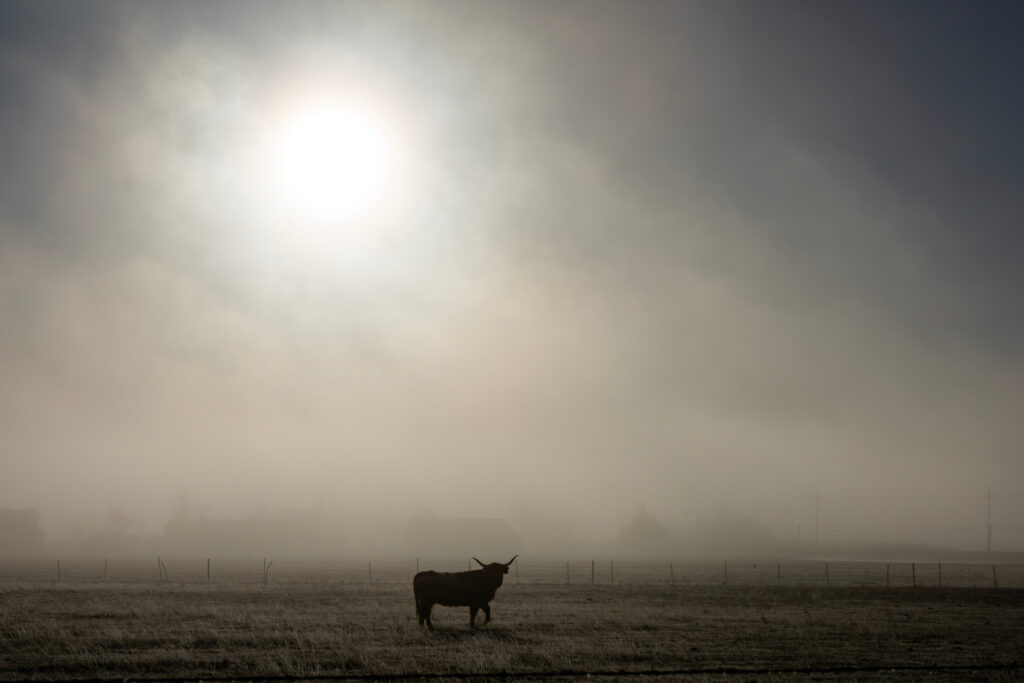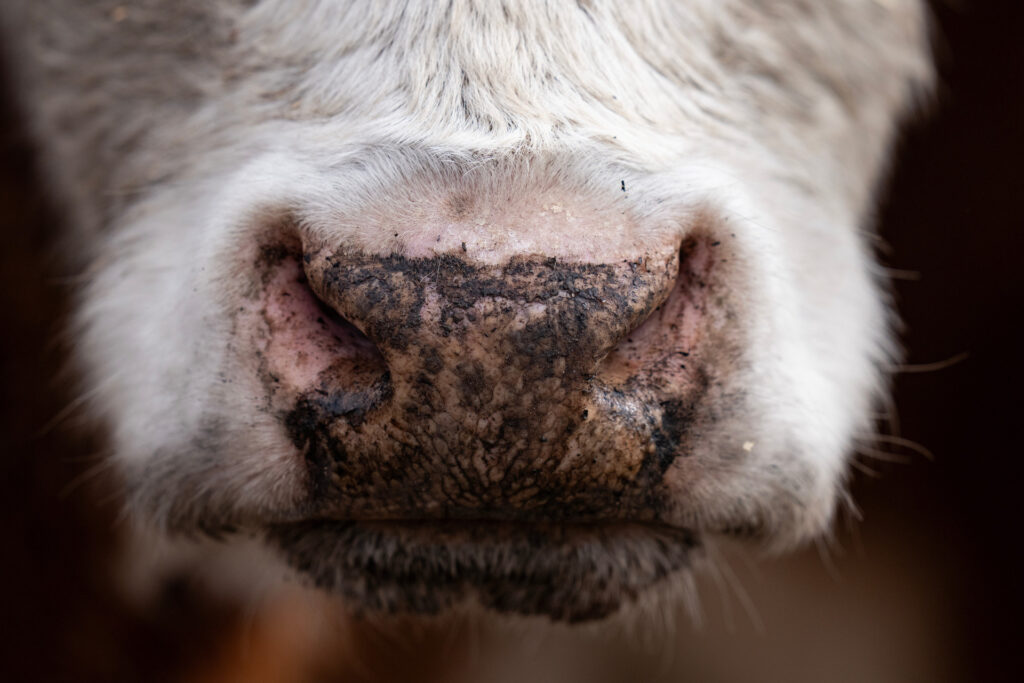Livestock respiratory issues expected following Panhandle wildfires
Texas A&M Veterinary Medical Diagnostic Laboratory prepares for increased testing
Weeks after the smoke has cleared from the wildfires in the Texas Panhandle, the Texas A&M Veterinary Medical Diagnostic Laboratory is alerting livestock owners to watch their surviving livestock for respiratory issues.

Alexis Thompson, DVM, Ph.D., DACVPM, veterinary diagnostician at the Texas A&M Veterinary Medical Diagnostic Laboratory in Canyon, said the diagnostic lab expects to see an uptick in samples from livestock that were near the flames or smoke from the wildfires.
“Those on the ground are now reporting respiratory signs such as heavy breathing and wet coughs from cattle,” Thompson said. “Smoke has a high concentration of fine particulate matter, which can lead to respiratory irritation in animals, as well as humans.
“I suspect in the coming weeks we will have a lot of people asking questions on infectious causes of bovine respiratory disease. There will be a lot of secondary bacterial infections in cattle’s lungs because of damage from smoke inhalation, which can also spread throughout the body and lead to lethargy, weakness and an elevated temperature.”
Effects on livestock long after the fires are gone
The warm to hot air from wildfires can lead to damage in the respiratory tract as well, Thompson said. The combination of these factors can damage the integrity of the respiratory lining and lead to fluid in the lungs, also known as pulmonary edema.

Cattle with pulmonary edema can have an increased respiratory rate and effort. Some may have wet coughs and serous discharge from their nose that ranges from clear to yellow to light pink.
Thompson said antimicrobials will not help with the initial damage but may help prevent secondary bacterial infections. However, she expects the secondary wave of mortalities will likely stem from this.
“Unlike in human medicine, our medical interventions for cattle with smoke inhalation are limited, and euthanasia may be the best option for many of them,” she said.
All animals — cattle, horses, chickens, companion animals — can be affected by smoke inhalation and may show similar signs. More treatments are available for horses and companion animals than cattle and poultry.
“Our poultry can get inflammation in their air sacks and lungs, which can result in coughing and difficult breathing,” Thompson said. “Respiratory disease in poultry is also a sign of avian influenza, which is a prevailing issue in the U.S. It is strongly recommended that poultry with respiratory signs be tested for avian influenza from a public health standpoint.”
Wildfire research on livestock
According to a Beef Quality Assurance, BQA, publication based on a study of the California fires, indirect losses were primarily associated with smoke inhalation and included cases of pneumonia and reproductive losses, such as reduced conception, low birthweight, rare abortions, poor weight gain and drops in milk production.
Another consideration, the study said, is the stress from evacuations or confinement following the fire.
The BQA program recommends when monitoring cattle, pay attention to signs of respiratory irritation such as coughing, fast or heavy breathing, and general signs of illness such as droopy ears or discharge from nose or eyes.
Reducing exercise or movement during these periods will help the animals recover more quickly, as wildfire smoke and higher temperatures can cause increased respiratory rates and the inhalation of more harmful particulates.
Low-stress handling and good stockmanship are more important during times when air quality is poor. Constant and clean water sources for proper hydration are key because they will help the immune system, minimize the effects of heat, and help clear respiratory airways.
TVMDL provides diagnostic testing
Thompson said TVMDL offers diagnostic testing and can make sampling recommendations, but generally recommends people work with their veterinarians first and foremost.
She said sensitivity tests of bacterial cultures can help in antimicrobial selection for all species. As people treat animals for burns, sampling wounds can guide the antimicrobial selection to help prevent secondary infections that burn victims are at risk for.
“For antimicrobials, we always recommend that people work with their veterinarians,” Thompson said. “This is especially important for our food animals to maintain a healthy and safe food supply. I have been in contact with most of the veterinarians in the area, and they are up and running.”
TVMDL also conducts testing on insured cattle and horses that have died, if a necropsy or post-mortem evaluation needs to be submitted for insurance purposes for an official cause of death.


